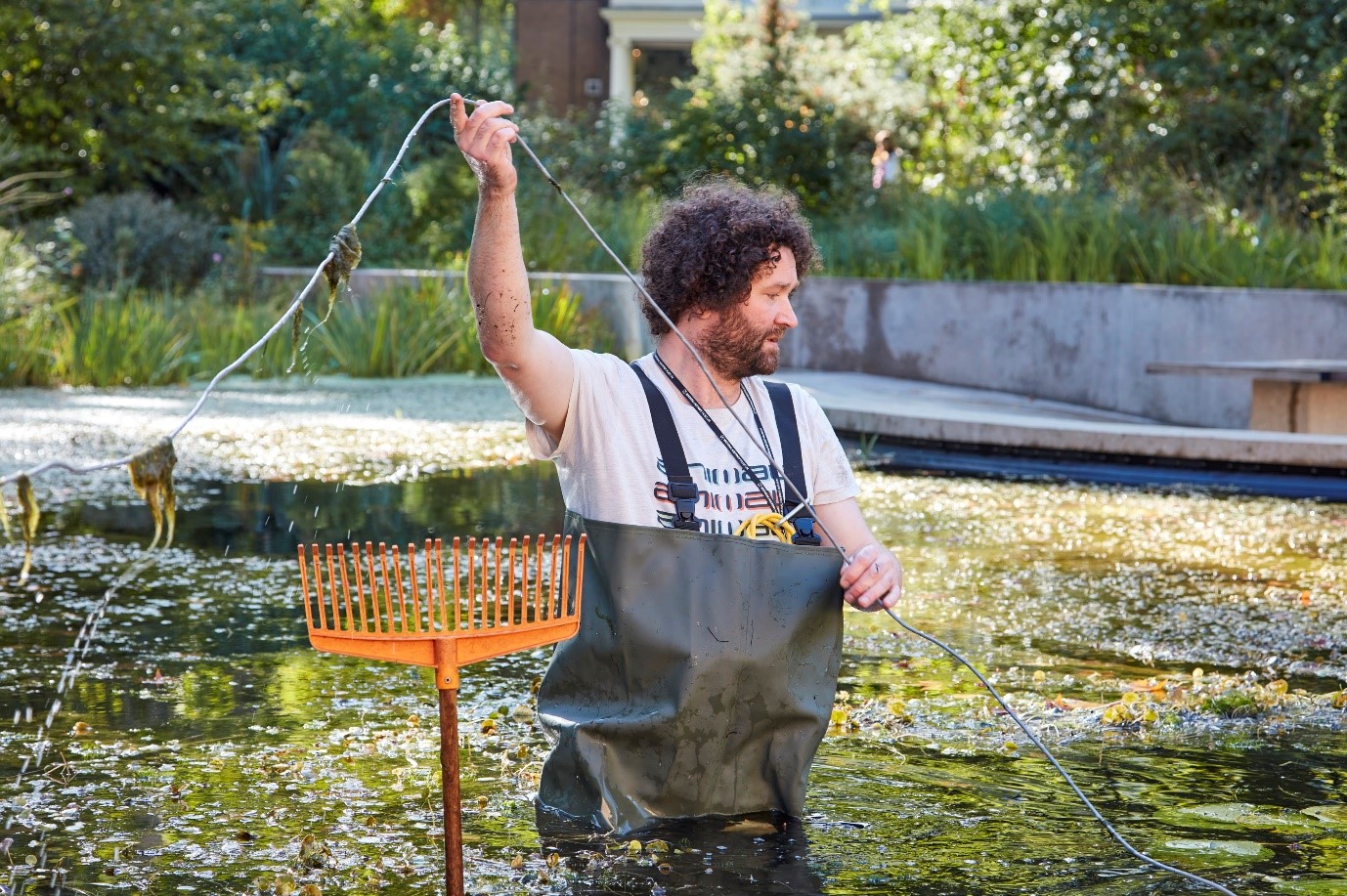- UK & Ireland›
- NHM
The Nature of Tech
The Natural History Museum is discovering faster and more collaborative ways of working with AWS technology.
Pulling data from the weeds
The Natural History Museum is at the forefront of biodiversity research, gathering plant and wildlife data to fight against the effects of climate change and find solutions to the planetary emergency. The Museum has enhanced this work through AWS technology, enabling scientists to unlock the full potential of their research at speed and scale.
By installing sensors in its gardens and using environmental DNA capture methods, the Museum’s scientists can monitor data on a previously unachievable scale. A Data Ecosystem built with AWS technology is being used to process and manage the data on one platform. The system now provides open access to scientists across the UK.
This accelerates nature recovery research and has established a new collaborative way of working for the Museum.
The gardens are set to become one of the most intensively studied urban nature sites of their kind. © The Trustees of the Natural History Museum

Fostering collaboration
As scientists, we haven’t always worked as one team. With AWS, we are creating one centralized data solution which will allow researchers across the country to collaborate in new ways we’ve not been able to before.
– Dr. John Tweddle, Head of Angela Marmont Centre for UK Nature
Understanding Biodiversity in the Modern World
The Natural History Museum has followed three key steps to monitor urban biodiversity.
Building the Sensor Network
As part of the Urban Nature Project, the Museum has renovated and turned its gardens into ‘living galleries’. These are fitted with a network of 25 sensors designed to detect life through temperature, acoustics, and other environmental factors.
Collecting Environmental DNA
Alongside this, scientists collect samples of environmental DNA left behind by living organisms in the soil, water or air. This eDNA can be extracted and analysed in a lab to work out which species were there at that particular time, so scientists get a clear picture of the urban gardens’ biodiversity.
Leveraging a Data Ecosystem
By bringing together data from the sensors, eDNA and visual observations, scientists can track nature recovery progress over time. Built using AWS technology, the Museum's Data Ecosystem provides a platform to do this, simplifying and speeding up the process with streamlined data management.
Where Nature meets Technology
The partnership makes use of an array of AWS services, with the most prominent outlined below.
AWS Fargate
This is a serverless, pay-as-you-go compute engine that lets you focus on building applications without managing servers. It improves your operational posture and is used by the Museum to scale applications in the Data Ecosystem.

AWS Glue
The Museum uses AWS Glue to prepare datasets simply, quickly, and cost-effectively. This data integration service is also serverless, making it easier to integrate data from multiple sources for analysis, machine learning, and application development.

AWS Cognito
Processing more than 100 billion authentications per month, this service helps you implement customer identity and access into your web and mobile applications. It’s currently being used to enable user management in the Data Ecosystem.

Where in the butterfly lifecycle are you?
Transform your understanding from caterpillar to butterfly with these three videos. Natural History Museum experts talk through the project steps in increasing levels of complexity.
Understanding the Partnership
AWS’ work with the Natural History Museum has shown that the right technology can transform all sorts of projects. The Data Ecosystem is an example of a practical solution unlocking collaboration across an entire organisation, streamlining data and accelerating research.
To help you understand the extent of what our technology can do, the partnership is written up in full below. Give it a read to see what AWS transformation looks like.

Additional resources
Did you find what you were looking for today?
Let us know so we can improve the quality of the content on our pages